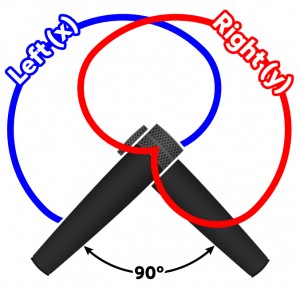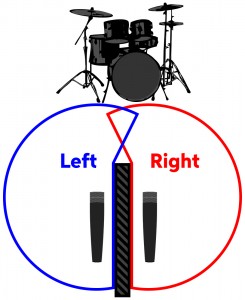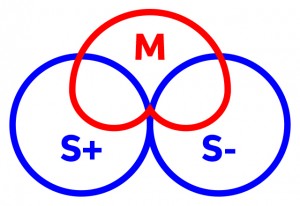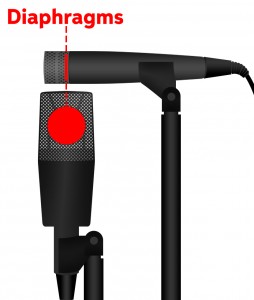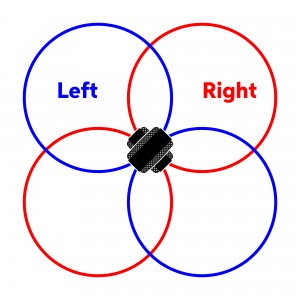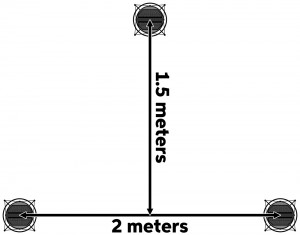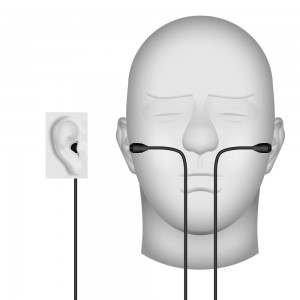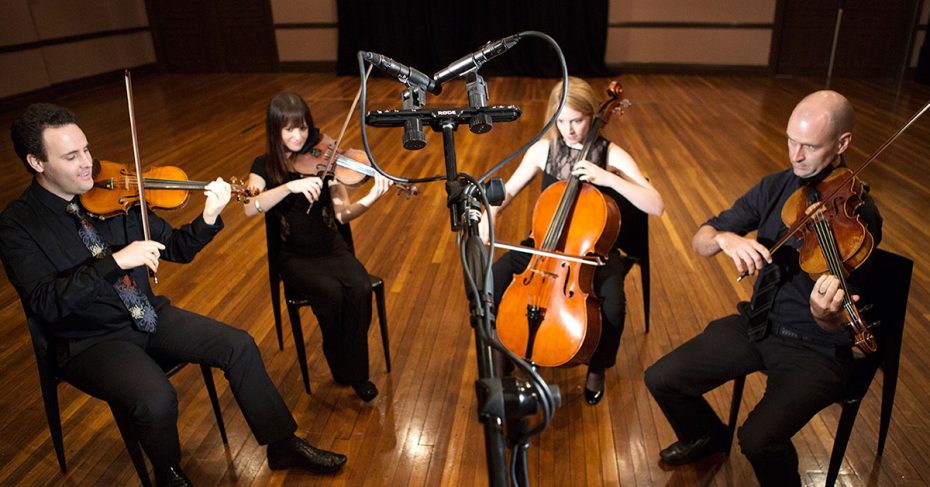
Engineers have been discovering unique techniques for recording in stereo for decades. Most of us are familiar with two or three techniques, but there are well over a dozen great methods to choose from, each with its own particular strengths. Here’s a list of the top seven stereo mic techniques we’ve used here at Sweetwater, with some nods and honorable mentions to a few others. Next time you need to record in stereo, we hope these methods help to fuel your creativity.
7 Effective Stereo Miking Techniques
1. XY Stereo
If you’re like most engineers, then the XY technique is probably the first stereo miking technique you learned. This one is extremely simple to set up — just position two cardioid mics (usually small-diaphragm condensers) at right angles, aligning the front of the capsules, and you’re good to go. This method is ideal for close-mic applications and provides a clear but not terribly wide stereo image with minimal phase issues.
Pro Tip: You can explore many variations on the standard XY stereo mic technique by making the angle of the mics greater than 90 degrees. This increases the stereo width and decreases the strength of the center.
2. A-B Stereo
For medium-distance stereo miking for choirs, orchestras, and even drum kits, A-B stereo may be your best bet. This stereo mic technique involves spacing a pair of cardioid or omnidirectional microphones apart in such a way that they cover the space but don’t create phase issues for each other. Some also add a third center microphone to strengthen the center image.
Depending on the space, this may not be possible. To help facilitate stereo separation and reduce phase problems, a pair of microphones may be isolated with an absorbent baffle. Commonly known as a Jecklin disk or the modified Schneider disk, when properly applied, a baffled pair may be much closer together than a regular A-B stereo pair. The stereo separation you’ll experience with a baffled A-B stereo pair is even more pronounced if you use omnidirectional mics.
Pro Tip: Any time you have microphones covering the same sound source from different distances, you’re likely to run into some phase problems, as the offset in distance causes the sound to reach the microphones at different times. When in doubt, use your ears, reevaluate your mic placement, and make adjustments to get the results you want.
3. Mid-Side Stereo
Don’t want to worry about phase issues? Then you should definitely check out the Mid-Side (M-S) stereo technique. All you need to set up this totally phase-coherent stereo technique is a cardioid mic (the mid or M mic), a figure-8 mic (the side or S mic), and an M-S decoder of some kind (or some clever summing in your DAW).
Here’s how it works. You arrange your mics so that the figure-8 pattern is facing the sides (with the null side of the mic facing the source) and place your cardioid mic on top of it, facing toward the sound source. This way, there’s minimal overlap between the microphone patterns. Assuming you’re managing your Mid-Side processing manually in your DAW (there are plug-ins and other software that do all of this), the first thing you need to do is duplicate the side mic and flip the phase, panning the in-polarity channel to the left, and the inverted-polarity channel to the right. When you combine these with the mid mic, you get a stereo image comprised of mid + side for the left and mid – side for the right.
A good idea is to bus the two side channels to a separate stereo bus, so you can control both side volumes with one fader. Now, when you raise or lower the volume of the combined side mics, you will be adjusting the stereo width. Best of all, since the stereo side channels are completely phase coherent (both derived from the same mono source), they’ll cancel each other out when summed to mono, leaving your final stereo mix completely phase coherent.
Pro Tip: It’s a good idea for both microphones to sound identical, or you may have trouble matching levels, so many engineers use the same multi-pattern condensers for both microphones, but that isn’t strictly necessary.
4. Blumlein Stereo
In a way, Blumlein stereo (named after Alan Blumlein) is a lot like XY, only with greater stereo separation and potentially better room ambience. This setup uses two figure-8 microphones positioned so that the elements cross at right angles and as close to one another as possible. Because the figure-8 polar pattern offers complete off-axis (side) rejection, these mics pick up an almost completely isolated (coincident) stereo field.
Pro Tip: Depending on where you position your Blumlein pair, you can pick up more or less of the room ambience. Position it very close to the source and far enough away from the rear wall, and you’ll get pure stereo with virtually no ambience.
5. Decca Tree
The Decca Tree technique was developed by Decca Records in the 1950s, and it’s one of the most popular methods of recording stereo and spacial ambience in orchestral and symphonic productions. The Decca Tree itself consists of an arrangement of three omnidirectional microphones — the Neumann M 50 tube condenser is a perennial favorite — suspended around 10′ over the conductor’s head. The rear two microphones are two meters (about 6.5′) apart, and the center mic one and a half meters (just under 5′) in front of the others in a triangle formation. The effect is a natural and highly musical stereo recording. There are many variations on this theme and mic spacing, such as the Fukada Tree and the OCT array, which owe their inspiration to this timeless microphone arrangement.
Pro Tip: While it’s great for full-scale orchestral and symphonic productions, the Decca Tree is also excellent for capturing drums, choirs, and other small ensemble arrangements.
6. Binaural Stereo
At some point, a cunning recording engineer must have thought that the best way to capture natural stereo was to build a head and stick microphones in it, just like we hear, because that’s exactly what the binaural stereo technique is. There are a few keys to this technique that make it appear highly technical, but anyone with a bit of time and the right resources can pull it off.
First, you need a pair of small and precise omnidirectional microphones, such as DPA 4060s. Then you need an artificial head. A mannequin head is a good place to start. Set the microphones into the openings of the ears, and you’ll have a stereo effect that sounds amazingly convincing over headphones. As great as it sounds on headphones, the only downside of binaural is that it doesn’t translate as well to spaced loudspeakers.
Pro Tip: To pull this off right, you’ll need to ensure that the ears are as accurate as possible. Some DIY engineers have gone so far as to make plaster molds of their ears to create latex models, but there are many other ways to pull this off.
7. ORTF Stereo
Born in the Office de Radiodiffusion Télévision Française French broadcasting company, the ORTF stereo technique is an improvement on the traditional XY stereo technique. This method uses a pair of first-order cardioid microphones with their diaphragms spaced 17cm (6.7″) apart and at a 110-degree angle from each other. The idea is to mimic the way human ears hear, but without the hassle of constructing a head analog to get the job done. This recording method yields a stereo image that’s wider than XY stereo, without completely omitting center information.
Pro Tip: Like XY stereo, the ORTF stereo technique works best at close distances.
Stereo Mics Add New Depth to Your Performances
If you’re new to the world of stereo mic techniques, your first experience will hopefully be a revelation of all the creative possibilities there are. While modern effects can double a take for a perceived stereo field, that can introduce phase issues if you’re not careful. Recording a performance in stereo provides two audio signals that are unique at the source, ideally creating a more pleasant mixing experience. Shop for your first pair of stereo microphones at Sweetwater, or give your Sales Engineer a call at (800) 222-4700.


